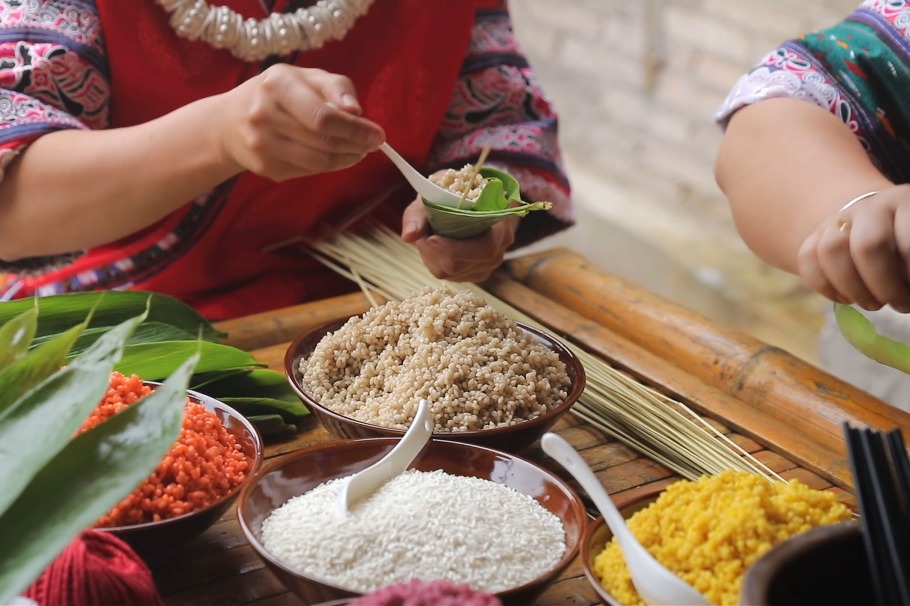China battles drought to ensure stable summer harvest

BEIJING -- With a persistent drought gripping vast regions of the country, Chinese authorities are making multi-faceted efforts to mitigate its impact on agriculture as grain crops have entered a critical growth stage.
Since the start of 2025, China has generally experienced a warm and dry climate, characterized by higher temperatures and significantly reduced rainfall.
According to the national observatory, the average temperature nationwide reached 5.7 degrees Celsius by May 25 this year, 0.8 degrees Celsius above the seasonal norm, with provinces like Henan, Anhui and Hubei recording their highest temperatures for this period since 1961.
Meanwhile, the average precipitation fell to just 143.7 millimeters, 10.6 percent below the long-term average and marking the lowest level since 2012. In some areas, rainfall plunged by as much as 80 percent.
"Precipitation in the Yellow River basin, a key agricultural region, was down by nearly 30 percent. In the middle reaches, the deficit was 30 to 40 percent," said Wang Weilu, an official with the Yellow River Conservancy Commission of the Ministry of Water Resources.
High temperatures and low rainfall have triggered rapid drought development from the northwest regions to the middle and lower reaches of the Yangtze River and southwestern provinces including Sichuan, said Zhai Jianqing, a meteorological disaster specialist at the National Climate Center.
As of April 18, drought classified as moderate or worse had affected nearly 2.02 million square km, including 477,000 square km of extreme drought, official data showed.
The timing of the drought is concerning. China's summer grains, including wheat, are in a crucial growth period. Last year, the summer grain harvest totaled nearly 150 million tonnes, accounting for over 21 percent of the country's annual grain production.
Zhang Gaomin, head of a farmers' cooperative in Jingyang county, Northwest China's Shaanxi province, said inadequate rainfall has visibly stunted wheat growth.
"Due to persistent water shortages, wheat plants are about 10 cm shorter than usual, impacting growth during this critical stage," Zhang said. His cooperative manages 7,600 mu (507 hectares) of winter wheat.
In many grain-producing regions, the drought has strained irrigation systems, dried up fishponds, limited water for livestock, and heightened risks of pests, crop diseases and wildfires.
In response, China has taken multi-pronged efforts to address the challenges. The Ministry of Finance, in coordination with the Ministry of Agriculture and Rural Affairs, has allocated disaster relief funds to support measures from irrigating to crop replanting.
Water conservancy authorities have improved national water allocation for agricultural purposes. Meteorological departments have intensified weather modification efforts, conducting over 500 cloud-seeding flights and nearly 17,000 ground-based operations since the start of the year.
At the local level, grassroots efforts are also making a difference. In Mashan county, South China's Guangxi Zhuang autonomous region, water pumps and generators were a common sight on farmland, delivering vital irrigation to parched crops. Local authorities have deployed 130 water pumps and over 30 gasoline generators, and have dispatched 11 anti-drought teams comprising more than 400 personnel to support villages.
"Firefighters have been delivering water to our village for three days, solving the water shortage for over 400 people," said Huang Honghua, an official in a village of Wuxuan County, Guangxi.
Meteorologists predict rainfall across much of central and northern China in early to mid-June will ease drought conditions, while parts of southern China may still face drought risks.
Despite the lingering challenges, with timely intervention and increased rainfall expected, the drought is unlikely to have significant impact on the country's overall grain output, according to experts.
China's 2024 grain output hit a record high of 706.5 million tonnes, an increase of 1.6 percent from 2023, official data showed.
- China battles drought to ensure stable summer harvest
- China's top court lauds decline in child-related cases
- Xixiakou wildlife enjoy zongzi for Dragon Boat Festival
- Symposium affirms scientific support to increase wheat yields
- Chinese researchers make big progress in weight-loss drug research
- A cultural expression




































